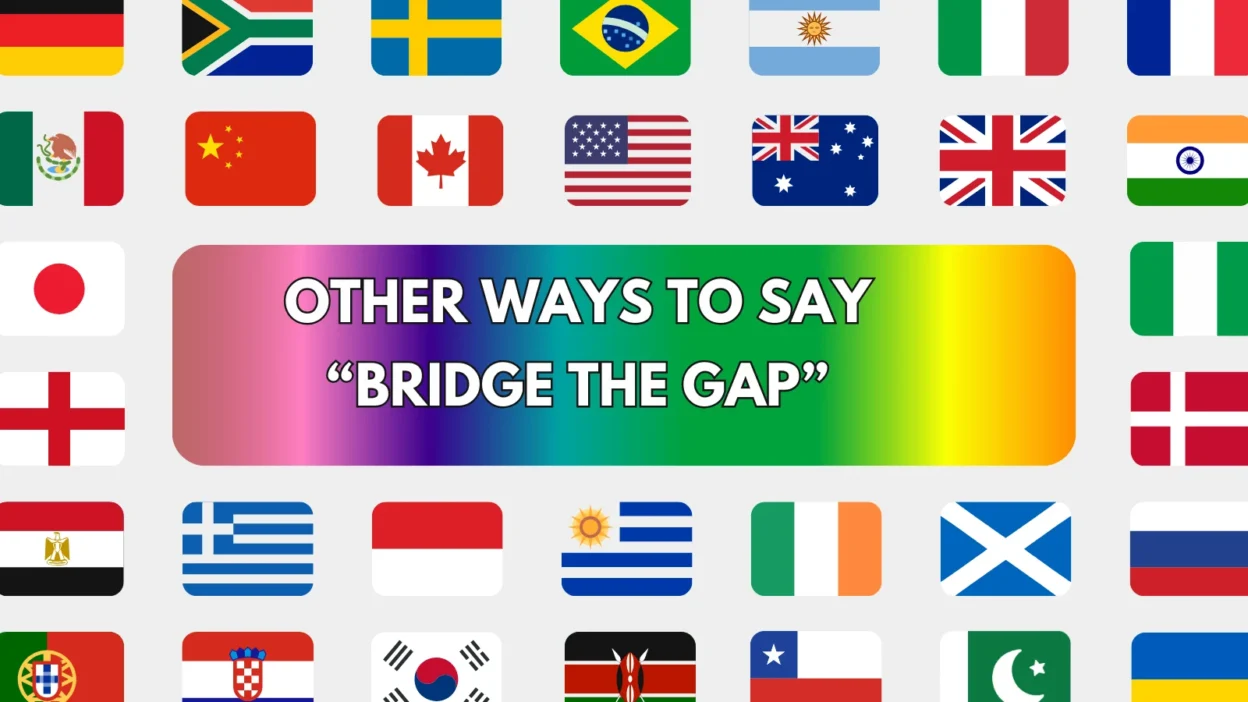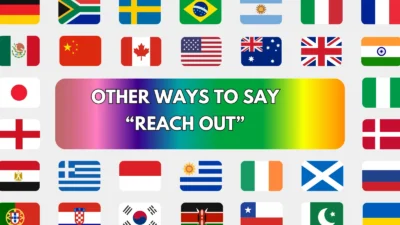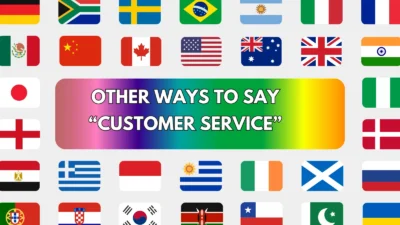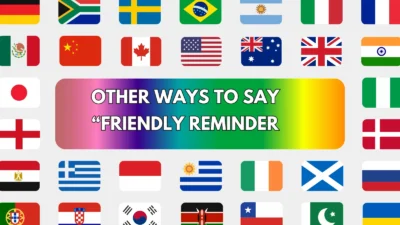The phrase “bridge the gap” is often used to describe the process of connecting two ideas, people, or situations that are otherwise distant or disconnected. Whether you’re writing about social inequality, generational differences, or business strategy, using this phrase too often can weaken your writing. Thankfully, there are many engaging alternatives to express the same idea with more precision and variety.
Below are 25 strong alternatives to “bridge the gap”, complete with clear explanations and examples to help you elevate your writing.
1. Close the Gap
Meaning:
To reduce the difference or distance between two things.
Detailed Explanation:
This phrase works well when discussing inequalities or disparities, such as income or education gaps.
Scenario Example:
The new policy aims to close the gap between rural and urban healthcare access.
Best Use:
Social science writing, policy discussions.
Tone:
Professional, serious.
2. Connect the Dots
Meaning:
To bring together pieces of information or ideas to understand the full picture.
Detailed Explanation:
More informal and creative, this is often used in storytelling or analytical writing.
Scenario Example:
The documentary helps connect the dots between climate change and global conflict.
Best Use:
Essays, presentations, creative writing.
Tone:
Insightful, engaging.
3. Build a Bridge
Meaning:
To create understanding or communication between two sides.
Detailed Explanation:
More visual and metaphorical, it emphasizes relationship-building.
Scenario Example:
Education can build a bridge between communities divided by language.
Best Use:
Conflict resolution, cultural essays.
Tone:
Hopeful, diplomatic.
4. Bring Together
Meaning:
To unite people or ideas.
Detailed Explanation:
Simple and direct, it conveys unity and cooperation.
Scenario Example:
The summit brings together experts from multiple fields.
Best Use:
Event descriptions, collaborative projects.
Tone:
Warm, inclusive.
5. Fill the Void
Meaning:
To provide what is lacking in a situation.
Detailed Explanation:
Used to describe addressing absence or emptiness—emotional or structural.
Scenario Example:
Community programs help fill the void left by school closures.
Best Use:
Social writing, psychology, opinion essays.
Tone:
Reflective, empathetic.
6. Narrow the Divide
Meaning:
To reduce separation or inequality between two sides.
Detailed Explanation:
Often used in political, social, or generational contexts.
Scenario Example:
Efforts are underway to narrow the divide between public and private education.
Best Use:
Policy papers, research essays.
Tone:
Formal, balanced.
7. Unite Different Perspectives
Meaning:
To bring various viewpoints into harmony.
Detailed Explanation:
Focuses on aligning opinions or ideas for a shared purpose.
Scenario Example:
The panel discussion united different perspectives on free speech.
Best Use:
Debates, academic writing.
Tone:
Collaborative, inclusive.
8. Resolve the Disconnection
Meaning:
To fix a break or lack of connection.
Detailed Explanation:
Ideal for tech, communication, or emotional topics.
Scenario Example:
Better feedback loops can resolve the disconnection between management and staff.
Best Use:
Business or interpersonal communication.
Tone:
Professional, analytical.
9. Foster Understanding
Meaning:
To promote deeper comprehension between groups or ideas.
Detailed Explanation:
Suggests a gradual and thoughtful process of building empathy or knowledge.
Scenario Example:
The initiative fosters understanding between immigrants and local citizens.
Best Use:
Cultural analysis, HR content.
Tone:
Respectful, nurturing.
10. Create Common Ground
Meaning:
To find shared values or goals.
Detailed Explanation:
Used when reconciling opposing sides or ideologies.
Scenario Example:
The negotiation focused on creating common ground.
Best Use:
Conflict resolution, politics, diplomacy.
Tone:
Neutral, cooperative.
11. Reduce the Gap
Meaning:
To shrink the difference between two extremes.
Detailed Explanation:
Straightforward, useful for statistics and measurable topics.
Scenario Example:
These reforms help reduce the gap in literacy rates.
Best Use:
Reports, studies, economics.
Tone:
Precise, informative.
12. Mend the Rift
Meaning:
To repair a break in relationships or ideas.
Detailed Explanation:
More emotional and poetic, especially used in personal or political situations.
Scenario Example:
The peace treaty helped mend the rift between nations.
Best Use:
Emotional writing, diplomacy.
Tone:
Sincere, healing.
13. Heal the Division
Meaning:
To restore unity after separation or conflict.
Detailed Explanation:
Implies a more compassionate or moral effort to unite.
Scenario Example:
Community outreach can heal the division caused by racism.
Best Use:
Social justice writing, activism.
Tone:
Empathetic, emotional.
14. Promote Unity
Meaning:
To encourage people to come together.
Detailed Explanation:
Positive and proactive, focused on cohesion and collaboration.
Scenario Example:
The campaign promotes unity across ethnic lines.
Best Use:
Public messaging, campaigns.
Tone:
Optimistic, inclusive.
15. Bridge the Divide
Meaning:
To connect two sides that are separated.
Detailed Explanation:
Very close to the original but more commonly used in political or ideological contexts.
Scenario Example:
His speech attempted to bridge the divide between conservatives and liberals.
Best Use:
Political essays, speeches.
Tone:
Formal, serious.
16. Find a Middle Ground
Meaning:
To reach a compromise or mutual agreement.
Detailed Explanation:
Focuses on negotiation and shared outcomes.
Scenario Example:
They found a middle ground on the budget plan.
Best Use:
Negotiation, diplomacy, teamwork.
Tone:
Balanced, cooperative.
17. Link the Two
Meaning:
To create a connection between two elements.
Detailed Explanation:
Great for analytical writing where you compare or correlate ideas.
Scenario Example:
The study links the two theories on behavior.
Best Use:
Academic essays, comparisons.
Tone:
Direct, analytical.
18. Integrate the Concepts
Meaning:
To combine different ideas into a unified whole.
Detailed Explanation:
Best for higher-level academic or philosophical discussions.
Scenario Example:
The theory integrates the concepts of tradition and innovation.
Best Use:
Scholarly writing, deep analysis.
Tone:
Intellectual, structured.
19. Reconcile Differences
Meaning:
To make opposing ideas or people agree.
Detailed Explanation:
Used in conflict resolution or ideological debates.
Scenario Example:
The workshop helps reconcile differences between generations.
Best Use:
Negotiations, team dynamics.
Tone:
Diplomatic, thoughtful.
20. Merge Perspectives
Meaning:
To combine multiple views into a single approach.
Detailed Explanation:
Highlights synergy and compromise.
Scenario Example:
The book merges Western and Eastern perspectives on health.
Best Use:
Multicultural writing, innovation.
Tone:
Inclusive, progressive.
21. Synchronize Efforts
Meaning:
To align actions toward a shared goal.
Detailed Explanation:
Often used in teamwork or large projects.
Scenario Example:
They synchronized efforts to launch the product globally.
Best Use:
Business, project management.
Tone:
Efficient, cooperative.
22. Harmonize Ideas
Meaning:
To make ideas work well together.
Detailed Explanation:
Focuses on compatibility and smooth integration.
Scenario Example:
The new curriculum harmonizes traditional and modern teaching methods.
Best Use:
Education, collaboration.
Tone:
Balanced, polished.
23. Unite Goals
Meaning:
To bring different objectives into alignment.
Detailed Explanation:
Useful in business or organizational strategy.
Scenario Example:
The new vision unites goals across all departments.
Best Use:
Mission statements, corporate plans.
Tone:
Strategic, forward-looking.
24. Blend Differences
Meaning:
To combine varied elements into a working whole.
Detailed Explanation:
Emphasizes diversity and balance.
Scenario Example:
The exhibit blends differences in art styles to create harmony.
Best Use:
Cultural discussions, design writing.
Tone:
Creative, inclusive.
25. Establish a Link
Meaning:
To create a visible or functional connection.
Detailed Explanation:
Neutral and flexible, suitable for technical or abstract content.
Scenario Example:
The research establishes a link between nutrition and memory.
Best Use:
Scientific and academic writing.
Tone:
Factual, neutral.
Conclusion
“Bridge the gap” is a powerful expression, but relying on it too heavily can make your writing predictable. By using these 25 nuanced alternatives, you can convey connection, unity, or reconciliation with more style and precision.
Whether you’re writing an essay, delivering a speech, or drafting a proposal, choosing the right phrase can strengthen your message and show your mastery of language.




